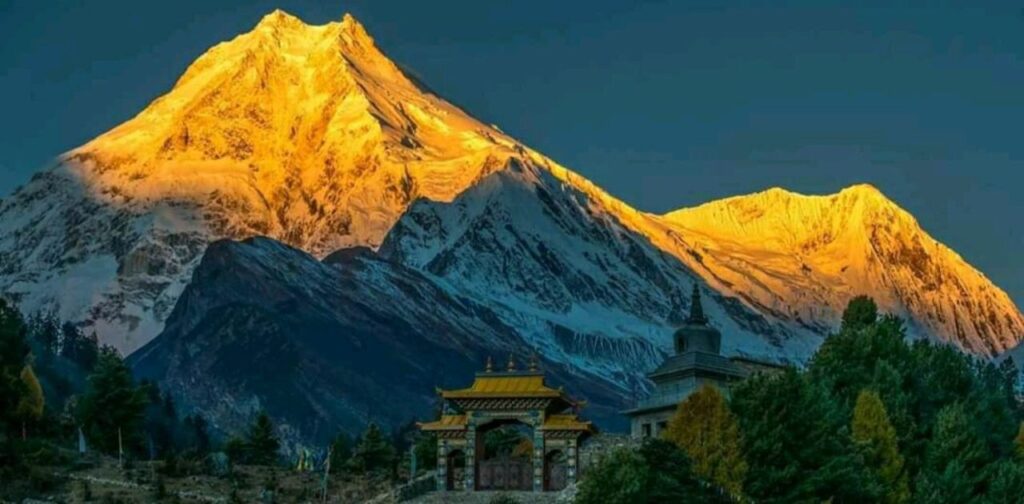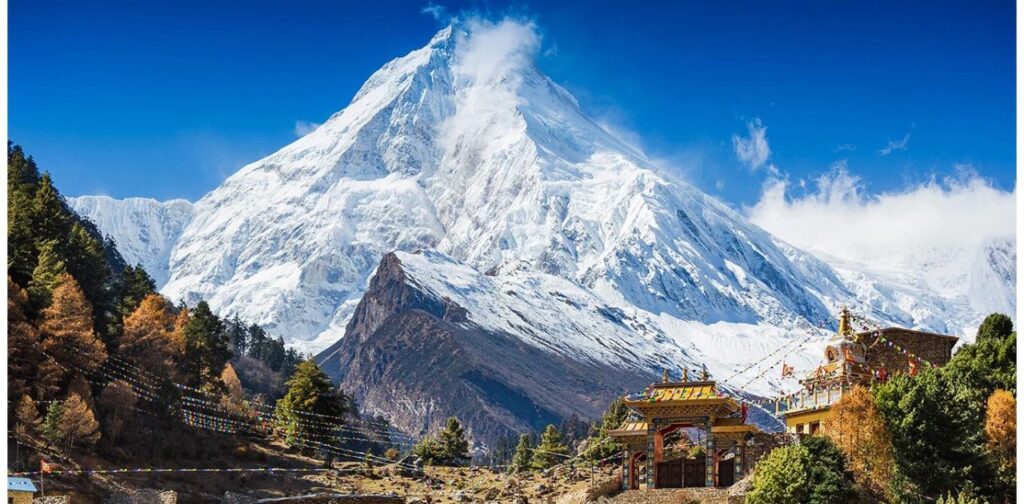The Himalayas, often referred to as the “abode of snow,” are not merely a collection of towering peaks but a vast and complex landscape that spans five countries—Bhutan, China, India, Nepal, and Pakistan. These majestic mountains have captivated the hearts of explorers, pilgrims, and adventurers for centuries, offering more than just physical grandeur.
At the core of this enigmatic range lies the concept of the Himalayan resting place, a sanctuary that provides both a literal and metaphorical refuge. These sacred sites embody peace, solitude, and a deep connection to nature and spirituality, drawing people from all walks of life to seek solace and enlightenment in the heart of these awe-inspiring mountains.
The Himalayas: A Tapestry of Culture and Nature
The Himalayas, a colossal mountain range stretching across five countries—Bhutan, China, India, Nepal, and Pakistan—are more than just a geographic feature. They are a living tapestry of culture, nature, and spirituality. For centuries, these mountains have been revered not only for their physical majesty but also for their profound impact on the environment, culture, and spiritual practices of the region. The Himalayas are a place where nature and culture intertwine, creating a unique and awe-inspiring landscape that continues to captivate the imagination of all who encounter them.
A Natural Marvel
The Himalayas are home to some of the world’s highest peaks, including Mount Everest, which stands at a staggering 8,848 meters (29,029 feet). This mountain range is not just a physical barrier but also a climatic one, influencing weather patterns across the Indian subcontinent and beyond. The Himalayas are the source of some of the world’s major river systems, including the Ganges, Brahmaputra, and Indus rivers, which sustain millions of people.
The biodiversity of the Himalayas is equally impressive, with ecosystems ranging from subtropical forests at lower altitudes to alpine meadows and glaciers at higher elevations. This diverse range of habitats supports an incredible variety of flora and fauna, some of which are found nowhere else on Earth. The snow leopard, red panda, and Himalayan tahr are just a few examples of the unique wildlife that call this region home.
The Himalayas also play a crucial role in the global climate system. The vast glaciers of the Himalayas store massive amounts of freshwater, which feed into rivers that are vital to the livelihoods of millions of people. However, these glaciers are increasingly under threat due to climate change, raising concerns about the future of water resources in the region.
Cultural Melting Pot
The cultural diversity of the Himalayas is as vast as its natural landscapes. The region is a melting pot of languages, traditions, and religions, each deeply intertwined with the rhythms of the mountains. The Himalayas are home to a multitude of ethnic groups, each with its own distinct culture and way of life.
In Bhutan, the practice of Tibetan Buddhism is central to the culture, with monasteries perched precariously on cliffs and mountainsides. In India, the Himalayas are considered sacred in Hinduism, with many important pilgrimage sites located in the mountains. The Tibetan Plateau, often referred to as the “Roof of the World,” is the heartland of Tibetan culture, where Buddhism has flourished for centuries.
The cultural richness of the Himalayas is also reflected in the region’s languages and arts. The Himalayas are home to a wide array of languages, some of which are spoken by only a few hundred people. Traditional crafts, such as thangka painting, wood carving, and weaving, are still practiced in many Himalayan communities, preserving the region’s artistic heritage.
Despite the region’s cultural diversity, there is a shared reverence for the mountains that transcends ethnic and religious boundaries. The Himalayas are seen as a place of spiritual significance, where the material world meets the divine.
The Concept of the Himalayan Resting Place

The notion of a “Himalayan resting place” transcends the idea of a mere physical location. It represents a sanctuary where individuals can find solace, peace, and spiritual renewal amidst the grandeur of the mountains. These resting places are often remote, secluded, and challenging to reach, embodying the idea that true peace and enlightenment require a journey—both physical and spiritual.
These sanctuaries are places where time seems to stand still, allowing visitors to disconnect from the stresses of modern life and reconnect with their inner selves. The solitude and tranquility of these resting places provide the perfect setting for meditation, contemplation, and self-discovery.
Historical Significance
The Himalayan resting places have long been destinations for pilgrims seeking spiritual enlightenment. The journey to these sanctuaries often involves traversing rugged terrains, crossing high mountain passes, and enduring harsh weather conditions. These physical challenges are symbolic of the inner journey that pilgrims undertake to overcome their personal obstacles and attain higher consciousness.
Many of these resting places are steeped in legends and myths, adding to their mystical allure. The Himalayas are often referred to as the “abode of the gods” in Hinduism, and many of the region’s sacred sites are believed to be the dwelling places of deities. In Buddhism, the Himalayas are considered a place of refuge, where the Buddha and other enlightened beings have meditated and attained enlightenment.
Modern Pilgrimages
In contemporary times, the concept of the Himalayan resting place has evolved to include not just spiritual seekers but also adventurers and tourists looking to escape the pressures of modern life. These resting places offer a unique blend of tranquility and adventure, attracting a diverse group of people who come to rejuvenate their minds, bodies, and spirits in the pristine mountain environment.
Modern pilgrimages to the Himalayas often involve trekking, yoga retreats, and meditation sessions, allowing visitors to immerse themselves in the natural beauty and spiritual energy of the mountains. These experiences provide an opportunity for personal growth and transformation, as individuals confront their own limitations and fears in the face of the majestic mountains.
Notable Himalayan Resting Places

Lumbini, the birthplace of Siddhartha Gautama, who later became known as Buddha, is one of the most significant spiritual resting places in the Himalayas. Located in the Terai plains of Nepal, Lumbini is a UNESCO World Heritage site that attracts thousands of pilgrims each year.
The Maya Devi Temple, marking the exact spot where Buddha was born, is the centerpiece of Lumbini. Surrounded by tranquil gardens and monasteries built by various Buddhist nations, the temple provides a serene sanctuary for meditation and reflection. Lumbini is a place where visitors can connect with the origins of Buddhism and experience the peaceful ambiance of this sacred site.
Rishikesh, India
Rishikesh, situated on the banks of the sacred Ganges River in the Indian state of Uttarakhand, is renowned as the “Yoga Capital of the World.” This town is a hub for those seeking spiritual growth and physical well-being through yoga and meditation.
Rishikesh is home to numerous ashrams and retreats where visitors can immerse themselves in practices that promote inner peace and mindfulness. The surrounding hills and forests provide a tranquil setting for meditation and introspection. The town’s spiritual energy, combined with its natural beauty, makes Rishikesh a popular destination for both spiritual seekers and adventure enthusiasts.
Paro Taktsang, Bhutan
Paro Taktsang, also known as the Tiger’s Nest Monastery, is one of Bhutan’s most iconic and sacred sites. Perched on the edge of a cliff 900 meters above the Paro Valley, the monastery is believed to be the place where Guru Rinpoche, the founder of Tibetan Buddhism, meditated in the 8th century.
The journey to Paro Taktsang is a pilgrimage in itself, involving a steep climb through dense forests and rocky terrain. The monastery’s breathtaking views and profound sense of serenity make it a place of spiritual renewal and inspiration. Paro Taktsang is a testament to the enduring power of faith and the human spirit’s quest for enlightenment.
Dharamsala, India
Dharamsala, located in the Indian state of Himachal Pradesh, is the residence of the Dalai Lama and the Tibetan government-in-exile. It is a prominent center for Tibetan Buddhism and attracts a large number of spiritual seekers and tourists.
The town of Dharamsala offers numerous meditation centers and monasteries, where visitors can experience the peaceful ambiance of Tibetan spirituality amidst the stunning backdrop of the Dhauladhar mountain range. Dharamsala is a place where the teachings of the Dalai Lama and the rich traditions of Tibetan Buddhism come to life, providing a sanctuary for those seeking spiritual growth and inner peace.
Read Also: All About North Point Church Pastor Resigns Controversy
The Journey to the Himalayan Resting Places
Reaching the Himalayan resting places often involves traversing rugged terrains, crossing high mountain passes, and enduring unpredictable weather conditions. The journey itself is a test of endurance, resilience, and determination.
The physical challenges of the journey are symbolic of the inner challenges that pilgrims and travelers face. The mountains demand a certain level of humility and respect, as they test the limits of human strength and perseverance. The sense of accomplishment upon reaching these resting places is often accompanied by a deep sense of spiritual awakening and renewal.
Spiritual and Emotional Transformation
The physical journey to the Himalayan resting places is mirrored by an inner transformation. As travelers navigate the mountain paths, they often find themselves confronting their own limitations, fears, and doubts.
The majesty and isolation of the Himalayas provide the perfect setting for introspection and self-discovery. The journey becomes a process of shedding old beliefs and patterns, making way for new insights and perspectives. The sense of peace and fulfillment that comes from reaching these sacred sites is a testament to the transformative power of the mountains.
Ecological Impact
While the influx of visitors brings economic benefits to the local communities, it also poses a threat to the fragile Himalayan ecosystem. The region’s delicate balance of flora and fauna is vulnerable to the pressures of tourism, deforestation, and climate change.
Sustainable tourism practices are crucial to preserving the natural beauty and cultural heritage of the Himalayan resting places. Efforts to reduce the environmental impact of tourism, such as waste management programs, eco-friendly accommodations, and community-based tourism projects, are essential to ensuring that these sanctuaries remain unspoiled for future generations.
The Future of Himalayan Resting Places
The growing popularity of the Himalayas as a travel destination necessitates a careful balance between tourism and conservation. While tourism provides much-needed income for local communities, it can also lead to environmental degradation and cultural erosion.
Conclusion
The Himalayan resting places offer more than just stunning vistas and challenging treks; they provide a profound sanctuary for spiritual renewal and cultural connection. These sacred sites, ranging from the serene gardens of Lumbini to the spiritually charged air of Rishikesh and the mystical heights of Paro Taktsang, embody a timeless allure that transcends the physical journey.
They represent a unique intersection of natural grandeur, cultural richness, and spiritual depth, inviting all who visit to embark on both an outward and inward journey. As the popularity of these destinations grows, it is essential to balance the benefits of tourism with the need for conservation and cultural preservation.
By fostering responsible tourism practices and respecting the delicate balance of these sacred landscapes, we can ensure that the Himalayan resting places remain a source of inspiration, peace, and enlightenment for generations to come.
Latest Article
Wdroyo Auto Insurance Guide – 2024
Uncategorized
Album:f7bc9yu1abs= Taylor Swift: Unveiling The Mystery
Uncategorized

Welcome to the heart of our website! The Admin Dashboard is your command center, where you can manage all aspects of the site effortlessly. Here, you’ll find intuitive tools for content management, user analytics, and system settings. Customize, control, and optimize your site experience with a few clicks. Whether you’re updating content, monitoring traffic, or fine-tuning user permissions, everything you need is right at your fingertips. Dive in and take charge!









